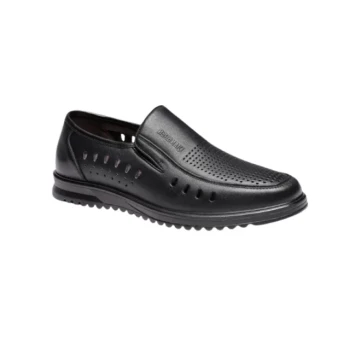By far, the most challenging temperature range for dressing appropriately while cycling is between 0°C and 10°C (32°F to 50°F), especially when it is raining. This specific window presents a complex thermoregulation puzzle that is much simpler to solve in conditions that are colder or warmer.
The core difficulty of the 0-10°C range is the two-front war you must wage: you are fighting to stay warm against external cold and rain while simultaneously fighting to stay dry from your own internal sweat.
The Core Challenge: A Battle of Moisture
The fundamental problem when cycling in cool, wet conditions is moisture management. Your body is a powerful furnace when you're exercising, and it produces a significant amount of heat and sweat.
Two Ways to Get Cold and Wet
Water conducts heat away from your body about 25 times faster than air. This means getting wet, whether from rain or sweat, is the quickest way to get dangerously cold.
In the 0-10°C range, you face this threat from two directions at once. Rain soaks you from the outside, while even a moderate effort can make you sweat enough to soak your layers from the inside.
Why Other Temperatures Are Simpler
To understand why the 0-10°C range is so difficult, it's helpful to look at why conditions outside this window are more straightforward.
Below Freezing (<0°C / 32°F)
When the temperature is below freezing, the objective is clear: insulation and wind protection. Precipitation is typically snow, which is far less penetrating than cold rain and can be brushed off.
You still sweat, but the primary goal is trapping heat. You can dress in heavier, more insulated layers without the immediate risk of getting soaked by rain. The problem is simpler to solve.
Mild and Warm Conditions (>10°C / 50°F)
Once the temperature rises above 10°C, your body can generate enough heat to keep you warm even if you get wet. The priority shifts from insulation to breathability and ventilation.
You can wear lighter layers and focus entirely on wicking sweat away from your skin. A light rain shower might be uncomfortable, but it's far less likely to cause a dangerous drop in core body temperature.
Understanding the Trade-offs
The central conflict in the 0-10°C danger zone is the trade-off between waterproofing and breathability. No fabric is perfect at both.
The Limits of "Waterproof Breathable" Gear
Modern technical fabrics are remarkable, but they have limits. They work by having pores small enough to block water droplets but large enough to let water vapor (sweat) escape.
However, a cyclist working hard can produce sweat vapor faster than even the best materials can transport it. This leads to a buildup of moisture inside your jacket, a phenomenon known as "wetting out" from the inside.
When Rain Defeats Breathability
Heavy rain makes this problem worse. It can physically block the fabric's pores from the outside, drastically reducing its ability to breathe and trapping even more of your sweat against your skin.
This creates the classic failure cycle: you put on a rain jacket to stay dry, but you work hard, overheat, and get soaked in your own sweat. Then, when you slow down or stop, that trapped moisture chills you instantly.
How to Apply This to Your Ride
Your strategy must adapt to the specific temperature and conditions you face. There is no single "perfect" outfit, only the right approach for the day.
- If your primary focus is riding below freezing (<0°C): Prioritize windproof insulation. Your main goal is to trap body heat and block the wind, so focus on thermal layers and protecting your hands, feet, and head.
- If your primary focus is the 0-10°C range in the rain: Accept that managing dampness is the goal, not staying perfectly dry. Use a system of highly breathable layers and focus on keeping your core warm with pieces like a thermal base layer and a windproof vest.
- If your primary focus is riding in mild weather (>10°C): Emphasize maximum breathability. Choose lightweight, moisture-wicking fabrics and carry a packable shell just in case of a sudden shower.
Mastering your layering system for these varied conditions is the key to comfortable and safe cycling all year round.
Summary Table:
| Temperature Range | Primary Challenge | Key Strategy |
|---|---|---|
| Below 0°C (32°F) | Insulation & Wind Protection | Trap body heat with thermal layers. |
| 0°C to 10°C (32-50°F) | Moisture Management (Rain & Sweat) | Balance breathability and waterproofing. |
| Above 10°C (50°F) | Breathability & Ventilation | Use lightweight, moisture-wicking fabrics. |
Ready to Conquer the Toughest Cycling Conditions?
As a large-scale manufacturer, 3515 produces a comprehensive range of high-performance cycling footwear and apparel for distributors, brand owners, and bulk clients. Our expertise in technical fabrics and layering systems ensures your gear is built to handle the precise challenges of the 0-10°C range—managing moisture, retaining heat, and providing ultimate comfort.
Let's equip your customers for success. Contact our team today to discuss your production needs.
Related Products
- Durable Waterproof Rain Boots | Custom Manufacturer for Wholesale & Brands
- Factory Direct Wholesale Rain Boots Durable Waterproof & Fully Customizable
- Safety Footwear Wholesale Manufacturer for Custom OEM/ODM Production
- Heavy-Duty Waterproof Nubuck Safety Boots Safety Shoes for Bulk Supply
- Premium Wholesale Waterproof Safety Boots High Performance Protection for Industrial Markets
People Also Ask
- Why should children wear thick socks with wellies? The Key to Comfort, Safety, and a Perfect Fit
- What certifications should you look for when purchasing sustainable Wellington boots? Choose GRS and FSC for verified eco-friendly footwear.
- Why are wellies particularly useful for toddlers? Unlock the Key to Messy Play & Development
- Are wellies bad for babies and toddlers' feet? A Guide to Safe, Healthy Footwear
- When are rain boots most useful? For Complete Protection in Deep Water and Mud



















